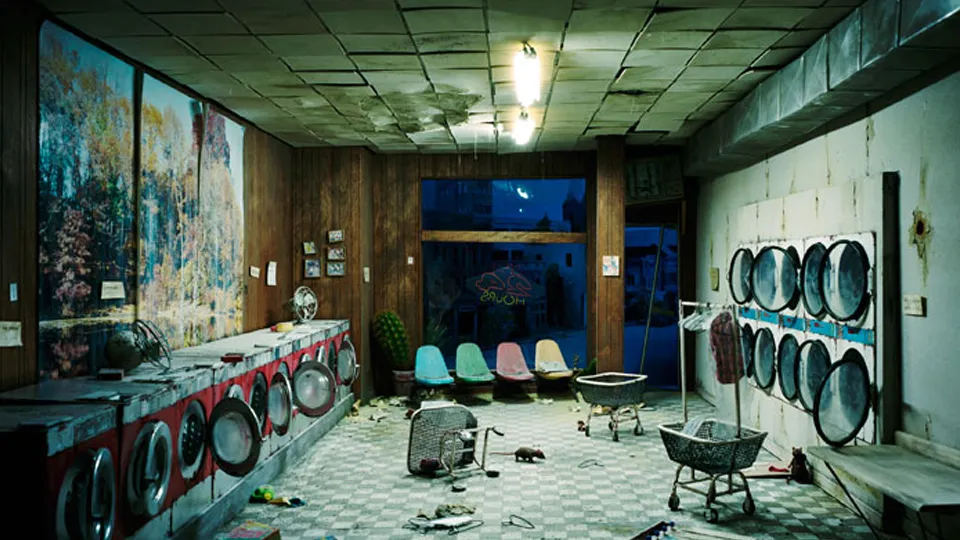The fashion industry is undergoing a revolutionary transformation as bioplastic fabrics and organic textiles emerge as game-changers in sustainable style.
For decades, the clothing industry has been one of the world’s most polluting sectors, responsible for massive carbon emissions, water consumption, and textile waste. However, a growing environmental consciousness among consumers and designers alike has sparked an unprecedented shift toward eco-friendly alternatives. Today, innovative materials like bioplastic fabrics and organic textiles are redefining what it means to dress responsibly while maintaining style and comfort.
This green revolution isn’t just a passing trend—it represents a fundamental reimagining of how we produce, consume, and dispose of clothing. From laboratory-grown materials to naturally cultivated fibers, the sustainable fashion movement is proving that environmental responsibility and aesthetic appeal can coexist harmoniously.
🌱 Understanding the Environmental Crisis in Traditional Fashion
Before exploring solutions, it’s essential to understand the magnitude of the problem. The conventional fashion industry relies heavily on synthetic materials derived from petroleum, such as polyester, nylon, and acrylic. These fabrics take hundreds of years to decompose and shed microplastics with every wash, contaminating oceans and ecosystems worldwide.
Cotton production, while natural, also presents significant challenges. Conventional cotton farming requires enormous quantities of water—approximately 2,700 liters to produce a single t-shirt—and relies on pesticides and chemical fertilizers that damage soil health and biodiversity. Additionally, the dyeing and finishing processes in textile manufacturing discharge toxic chemicals into waterways, affecting communities and wildlife.
The fast fashion business model has accelerated these problems exponentially. With clothing production doubling between 2000 and 2014, and the average consumer purchasing 60% more garments while keeping them half as long, the environmental toll has become unsustainable. Landfills overflow with discarded clothing, and incinerating textiles releases greenhouse gases into the atmosphere.
What Are Bioplastic Fabrics? The Science Behind Innovation
Bioplastic fabrics represent a breakthrough in material science, offering alternatives to petroleum-based synthetics. Unlike conventional plastics derived from fossil fuels, bioplastics originate from renewable biological sources such as corn starch, sugarcane, algae, mushrooms, and even food waste.
These innovative materials can be engineered to mimic the properties of traditional synthetic fabrics—offering durability, flexibility, and water resistance—while significantly reducing environmental impact. Some bioplastics are biodegradable, breaking down naturally when exposed to specific conditions, while others are designed for recyclability within closed-loop systems.
Types of Bioplastic Textiles Transforming Fashion
Several groundbreaking bioplastic materials are already making waves in the fashion industry:
- Polylactic Acid (PLA) Fibers: Derived from fermented plant sugars, PLA creates a soft, moisture-wicking fabric ideal for activewear and undergarments.
- Mycelium Leather: Grown from mushroom roots, this material offers a cruelty-free alternative to animal leather with comparable texture and durability.
- Algae-Based Textiles: Harvested from fast-growing aquatic organisms, algae fabrics sequester carbon during production and decompose harmlessly.
- Pineapple Leather (Piñatex): Created from pineapple leaf fibers, this material repurposes agricultural waste into a versatile textile.
- Orange Fiber: Extracted from citrus industry byproducts, this silky material demonstrates circular economy principles.
Major fashion brands are increasingly incorporating these materials into their collections. Stella McCartney, a pioneer in sustainable luxury fashion, has experimented with mycelium leather, while Adidas has developed shoes using bioplastic compounds derived from ocean plastic and biological materials.
🌾 Organic Textiles: Returning to Nature’s Wisdom
While bioplastics represent technological innovation, organic textiles embrace time-tested natural fibers produced without harmful chemicals. Organic farming practices prioritize soil health, water conservation, and biodiversity, creating fabrics that are gentler on both the environment and human skin.
Organic cotton stands as the most recognized example, cultivated without synthetic pesticides or fertilizers. This approach reduces water consumption by up to 91% compared to conventional cotton and eliminates chemical runoff that pollutes ecosystems. The resulting fabric is hypoallergenic, breathable, and incredibly soft—qualities that appeal to health-conscious consumers.
Beyond Cotton: Diverse Organic Fabric Options
The world of organic textiles extends far beyond cotton, offering diverse options for various applications:
- Organic Linen: Made from flax plants that require minimal water and no pesticides, linen is naturally biodegradable and becomes softer with age.
- Hemp Fabric: One of the most sustainable crops available, hemp grows rapidly without chemicals, enriches soil, and produces exceptionally durable fibers.
- Organic Wool: Sourced from sheep raised on organic farms with humane treatment standards, organic wool is renewable, biodegradable, and naturally temperature-regulating.
- Bamboo Viscose: When processed using closed-loop systems, bamboo creates a soft, antibacterial fabric from one of the world’s fastest-growing plants.
- Tencel/Lyocell: Manufactured from sustainably harvested wood pulp using non-toxic solvents that are recycled, this fabric combines eco-credentials with luxurious feel.
Certifications like GOTS (Global Organic Textile Standard) and OEKO-TEX provide consumers with assurance that textiles meet rigorous environmental and social criteria throughout the production chain.
The Consumer Revolution Driving Change 💚
Consumer awareness has become a powerful force reshaping the fashion landscape. Millennials and Gen Z shoppers increasingly prioritize sustainability when making purchasing decisions, with studies showing that 73% of young consumers are willing to pay more for sustainable products.
This demographic shift has compelled major fashion retailers to reassess their practices. Brands that ignore sustainability risk alienating their core customer base, while those embracing eco-friendly materials gain competitive advantages and brand loyalty. Social media amplifies this dynamic, with influencers and activists holding companies accountable for their environmental claims.
The second-hand clothing market has exploded, with platforms dedicated to reselling and upcycling garments extending product lifecycles and reducing waste. This circular economy approach complements the use of sustainable materials, creating a more holistic solution to fashion’s environmental challenges.
Challenges and Limitations in Sustainable Fashion Materials
Despite their promise, bioplastic fabrics and organic textiles face several obstacles to widespread adoption. Cost remains a significant barrier—sustainable materials typically carry higher price tags due to smaller production scales, specialized processing requirements, and certification expenses. This pricing gap can make eco-friendly fashion inaccessible to budget-conscious consumers.
Infrastructure challenges also persist. Many bioplastic fabrics require specific composting conditions to biodegrade properly, and without adequate industrial composting facilities, these materials may end up in landfills where they won’t decompose as intended. Additionally, some bioplastics can contaminate conventional plastic recycling streams if not properly sorted.
Performance concerns occasionally arise as well. While technology continues advancing, some sustainable materials may not yet match the durability, colorfastness, or weather resistance of conventional synthetics for certain applications. Balancing ecological benefits with functional requirements remains an ongoing development process.
The Greenwashing Problem
As sustainability becomes fashionable, some companies engage in greenwashing—making misleading environmental claims to capitalize on consumer interest without making substantive changes. Vague terminology like “eco-friendly” or “natural” without third-party certification can deceive well-intentioned shoppers.
Educated consumers must look beyond marketing language to examine specific material composition, production processes, and verifiable certifications. Transparency from brands about their supply chains and environmental impact metrics helps distinguish genuine sustainability efforts from superficial green marketing.
🔬 Innovation on the Horizon: What’s Next for Sustainable Fabrics
Research laboratories and startup companies worldwide are developing even more revolutionary materials that could transform fashion in coming years. Scientists are engineering fabrics with self-cleaning properties, temperature adaptation, and built-in biodegradability triggers.
Lab-grown materials represent particularly exciting frontiers. Companies are cultivating collagen-based fabrics that mimic leather without animal inputs, growing textiles from bacterial cellulose, and even programming biological systems to produce fibers with specific desired characteristics.
Nanotechnology applications are enhancing natural fabrics with improved stain resistance and durability without chemical treatments. These innovations could extend garment lifespans significantly, addressing sustainability through longevity rather than just material sourcing.
Carbon-negative textiles are emerging as well—materials that sequester more carbon during production than they emit. Algae-based fabrics excel in this area, as the organisms absorb CO2 while growing, potentially making fashion a tool for climate change mitigation rather than contribution.
Practical Steps: Building Your Sustainable Wardrobe 👗
Transitioning to a more sustainable wardrobe doesn’t require discarding everything overnight. Thoughtful, gradual changes create lasting impact while respecting both budget and existing resources.
Start by conducting a wardrobe audit. Assess what you already own, identify gaps and redundancies, and commit to maximizing the use of existing garments. Repairing, altering, and creatively styling current pieces extends their lifecycle and delays the need for new purchases.
When buying new items, prioritize quality over quantity. Investment pieces made from durable sustainable materials may cost more initially but provide better value over time through longevity. Look for timeless designs that transcend seasonal trends, reducing the impulse to constantly refresh your wardrobe.
Research brands committed to sustainability. Many companies now publish detailed information about their materials, manufacturing processes, and environmental initiatives. Support businesses that demonstrate genuine commitment through transparent practices and verifiable certifications.
Smart Shopping Strategies
- Read labels carefully: Look for certifications like GOTS, OEKO-TEX, Fair Trade, and Cradle to Cradle that verify sustainability claims.
- Consider versatility: Choose items that work across multiple contexts, maximizing wear occasions per garment.
- Explore rental and subscription services: For special occasions or trend experimentation, renting eliminates the waste of rarely worn items.
- Embrace second-hand shopping: Vintage and thrift stores offer unique finds while giving garments additional life.
- Care for clothing properly: Wash less frequently, use cold water, air dry when possible, and store garments correctly to extend their usable life.
The Business Case for Sustainable Fashion Innovation
Beyond environmental ethics, compelling business reasons drive the adoption of bioplastic fabrics and organic textiles. Companies incorporating sustainable materials often experience enhanced brand reputation, opening access to environmentally conscious market segments with strong purchasing power and loyalty.
Regulatory pressures are intensifying as governments implement stricter environmental standards for textile production. The European Union’s circular economy action plan, for example, includes provisions specifically targeting the fashion industry. Companies investing in sustainable materials today position themselves favorably for tomorrow’s regulatory landscape.
Risk mitigation represents another consideration. Climate change threatens conventional supply chains, with water scarcity affecting cotton production and petroleum price volatility impacting synthetic materials. Diversifying material sources with innovative sustainable options creates supply chain resilience.
Innovation in sustainable materials can also reduce long-term costs. As production scales increase and technologies mature, prices for eco-friendly alternatives continue decreasing. Early adopters gain competitive advantages through expertise and established supplier relationships.
🌍 The Global Impact of Choosing Sustainable Fashion
Individual clothing choices aggregate into collective impact. When consumers consistently select garments made from bioplastic fabrics and organic textiles, they send market signals that reshape industry priorities. Brands respond to demonstrated demand, allocating resources toward sustainable innovation.
This shift creates ripple effects throughout supply chains. Farmers transition to organic cultivation methods. Chemical companies develop safer alternatives. Manufacturers invest in cleaner production technologies. Workers benefit from improved conditions as ethical production practices accompany environmental consciousness.
The environmental benefits are substantial. Widespread adoption of sustainable textiles would significantly reduce fashion’s carbon footprint, currently estimated at 10% of global emissions. Water consumption would decrease dramatically, alleviating stress on already scarce freshwater resources. Ocean microplastic pollution would decline as petroleum-based synthetics are replaced with biodegradable alternatives.
Perhaps most importantly, the sustainable fashion movement demonstrates that systemic change is possible when innovation, consumer demand, and business incentives align. Success in transforming such a massive, entrenched industry offers hope and practical lessons applicable to other environmental challenges.
Creating Lasting Change Through Conscious Choices ✨
The rise of bioplastic fabrics and organic textiles represents more than a trend—it signals a fundamental reimagining of humanity’s relationship with clothing and consumption. These materials prove that fashion need not sacrifice the planet for style, comfort, or expression.
As technology advances and awareness grows, sustainable options will become increasingly accessible, affordable, and diverse. The pioneers adopting these materials today are building the foundation for an industry that respects ecological limits while celebrating creativity and self-expression.
Every purchase represents a vote for the kind of world we want to inhabit. By choosing garments made from sustainable materials, consumers participate in a movement larger than fashion—a collective effort to preserve the natural systems that sustain all life. The wardrobe transformation begins with education, continues through intentional choices, and culminates in a more beautiful, equitable, and sustainable future for fashion and the planet alike.
Toni Santos is a visual explorer and microscopic storyteller who delves into the hidden aesthetics of microbial life. Through a fusion of scientific curiosity and artistic insight, Toni transforms the overlooked world of bacteria, fungi, and cellular forms into mesmerizing visual narratives—revealing the elegance, symmetry, and chaos that thrive at microscopic scales.
Rooted in a fascination with life forms too small to see yet too intricate to ignore, Toni’s work captures the bizarre beauty of microbial colonies, biofilms, and spore patterns. These images aren’t just representations—they are celebrations of the artistic intelligence encoded in nature’s tiniest architects.
With a background in visual design and bio-inspiration, Toni merges scientific imaging techniques with creative expression, transforming petri dish cultures, fluorescence microscopy, and microbial textures into works that provoke both wonder and contemplation.
As the creative force behind Vizovex, Toni offers curated visual studies, microbial-inspired designs, and essays that bridge art and microbiology—inviting viewers to reimagine what beauty means at the edge of perception.
His work is a tribute to:
The hidden geometries of living systems
The surprising elegance of microbial growth
The role of micro-life in shaping visual culture
Whether you’re a scientist, artist, or simply curious about the unseen world that sustains us, Toni opens a window into a universe where life writes poetry in colonies and patterns, one microbe, one frame, one breathtaking detail at a time.





